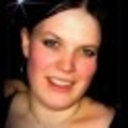[Analysis of clinical features and arylsulfatase B gene mutation in thirteen Chinese children with mucopolysaccharidosis type VI].
Paraules clau
Resum
OBJECTIVE
Mucopolysaccharidosis type VI (MPS VI) or Maroteaux-Lamy syndrome is an autosomal recessive lysosomal storage disease caused by a deficiency of arylsulfatase B(ARSB), which is required in the degradation of dermatan sulfate and chondroitin sulfate. The deficiency of ARSB leads to an accumulation of dermatan sulfate and chondroitin sulfate in lysosomes and gross excretion in the urine.Few articles about clinical study and ARSB gene mutation analysis of Chinese MPS VI patients were published. This study aimed to explore the clinical features and characteristics of ARSB gene in Chinese children with MPS VI.
METHODS
Thirteen children were diagnosed as MPS VI by ARSB enzyme activity determination during the period from 2009 to 2013. Their clinical features, radiological findings and urine glycosaminoglycan (GAG) levels were retrospectively reviewed. Direct sequencing was used to identify any mutation in the ARSB gene.
RESULTS
Thirteen children were diagnosed at the average age of (3.9 ± 2.2) years with 6 male and 7 female. All of these children presented with severe form and onset at an early age of (1.5 ± 0.8) years.Other clinical features included coarse facies, short stature, skeleton deformity, corneal clouding, hepatosplenomegaly with normal intelligence. The radiological findings in all children were characteristic of dysostosis multiplex, like abnormal development of vertebral bodies of the spine, campylorrhachia and paddle-shaped widened ribs. The MRI in case 2 showed cervical cord compression and multiple cysts degeneration in the corona radiate, cella lateralis and callosum.High urine GAG levels were detected, (307.10 ± 112.14) mg/L (Normally below 70 mg/L) and (722.28 ± 245.68) µg/mg creatinine. The ARSB enzyme activity in leukocytes was low, (13.29 ± 6.22) nmol/(mg×h) [Normal range (47-169) nmol/(mg×h)] by fluorogenic assay and (0.24 ± 0.18) U/g [Normal range (1.01-11.47) U/g] by colorimetric assay. A total of 11 mutations were identified by molecular analysis, including seven previously reported mutations (p.L72R, p.G167R, p.G303E, p.F399L, p. T442M, p.Y255X and p.R327X) and four novel mutations (p.Y175D, p.S403X, p.S464X and large deletion including ex. 2, 3). The c.1197C>G (p.F399L) mutation was the most common mutation in this study (31%).
CONCLUSIONS
The severe form of MPS VI is characterized by early onset and rapid illness progression. Both the radiological findings and increased urine GAG are important clues to diagnose MPS VI.Large decrease or absence of ARSB activity is diagnostic for MPS VI.Four novel mutations of ARSB gene were identified. The reported mutation c.1197C>G (p.F399L) was the hot-spot mutation in this study.



